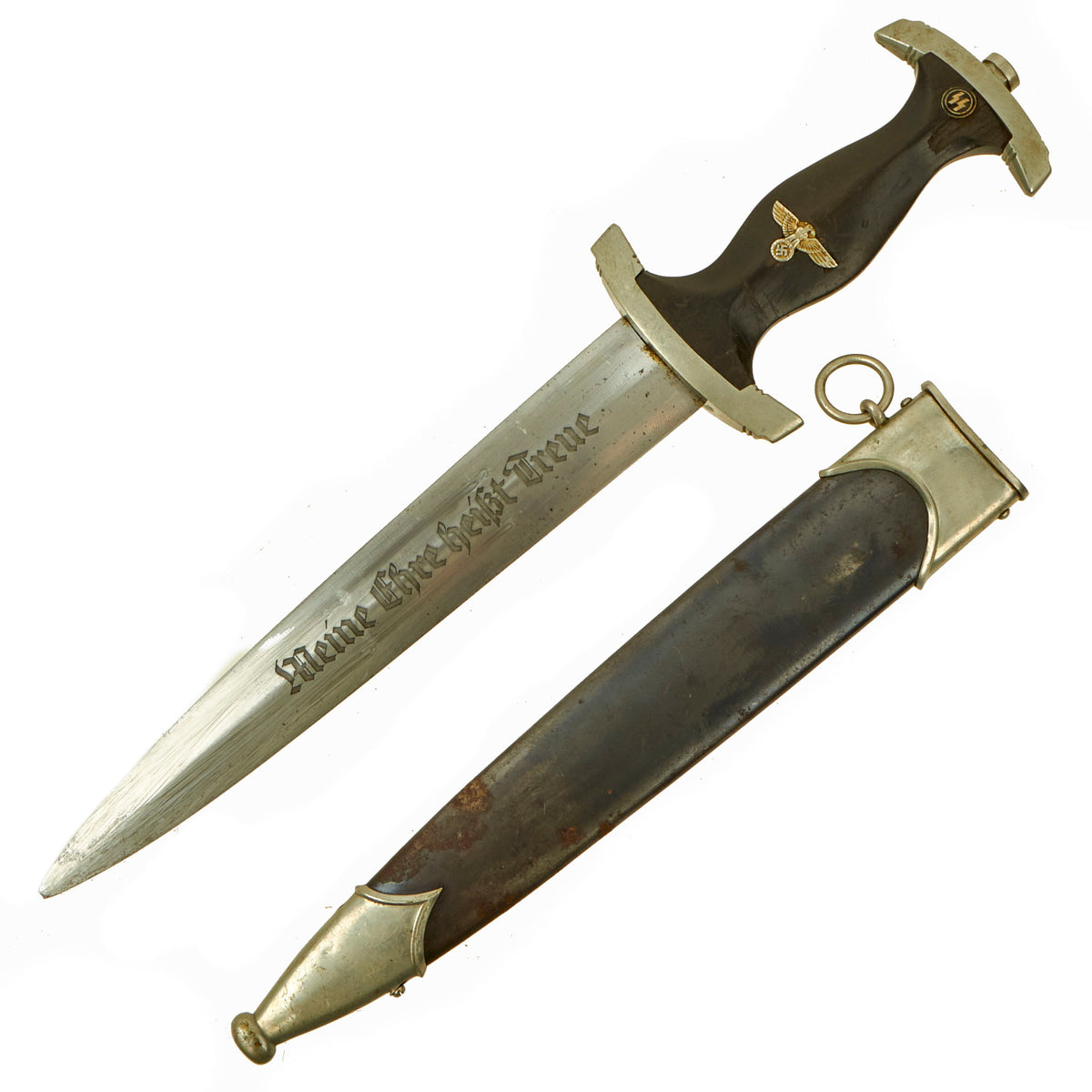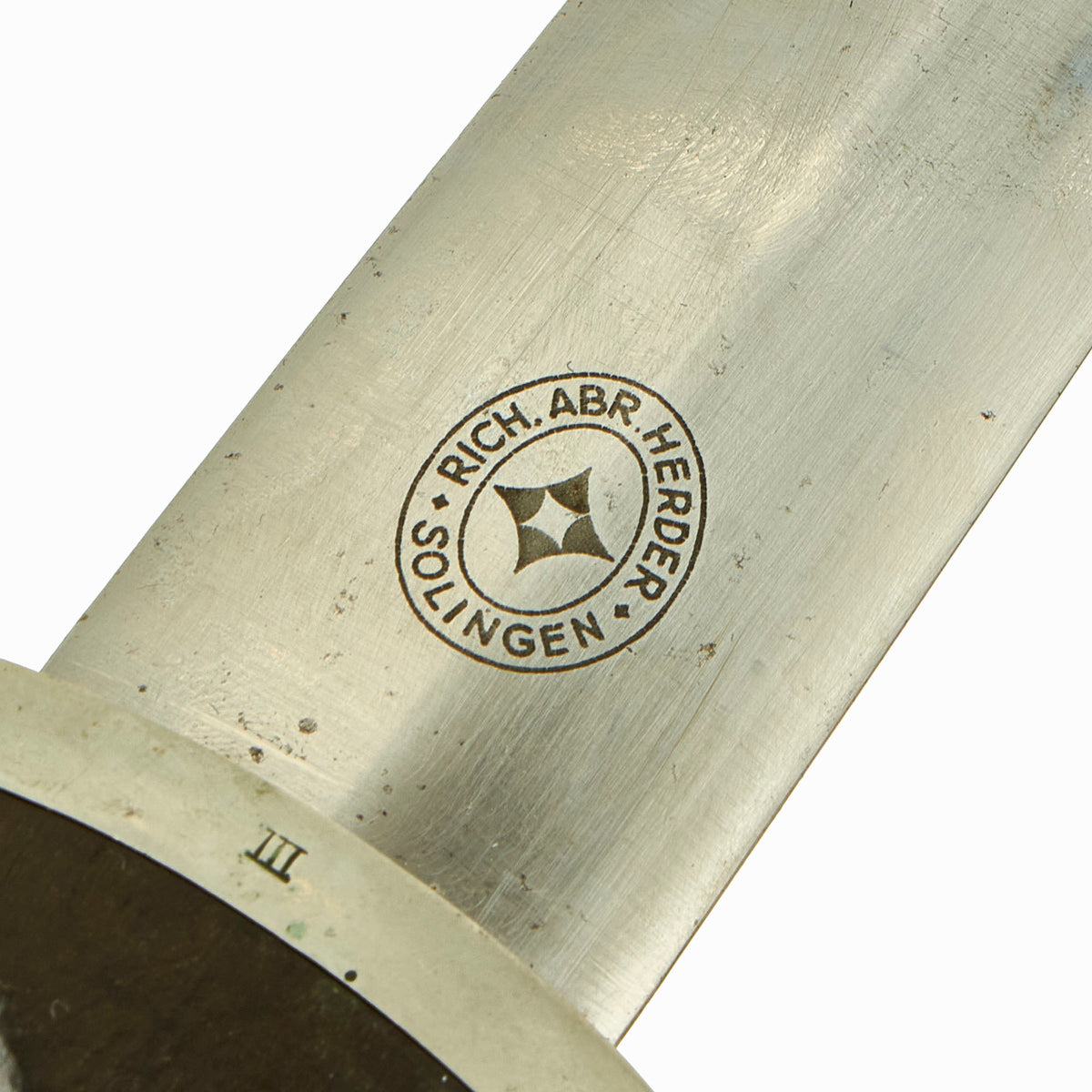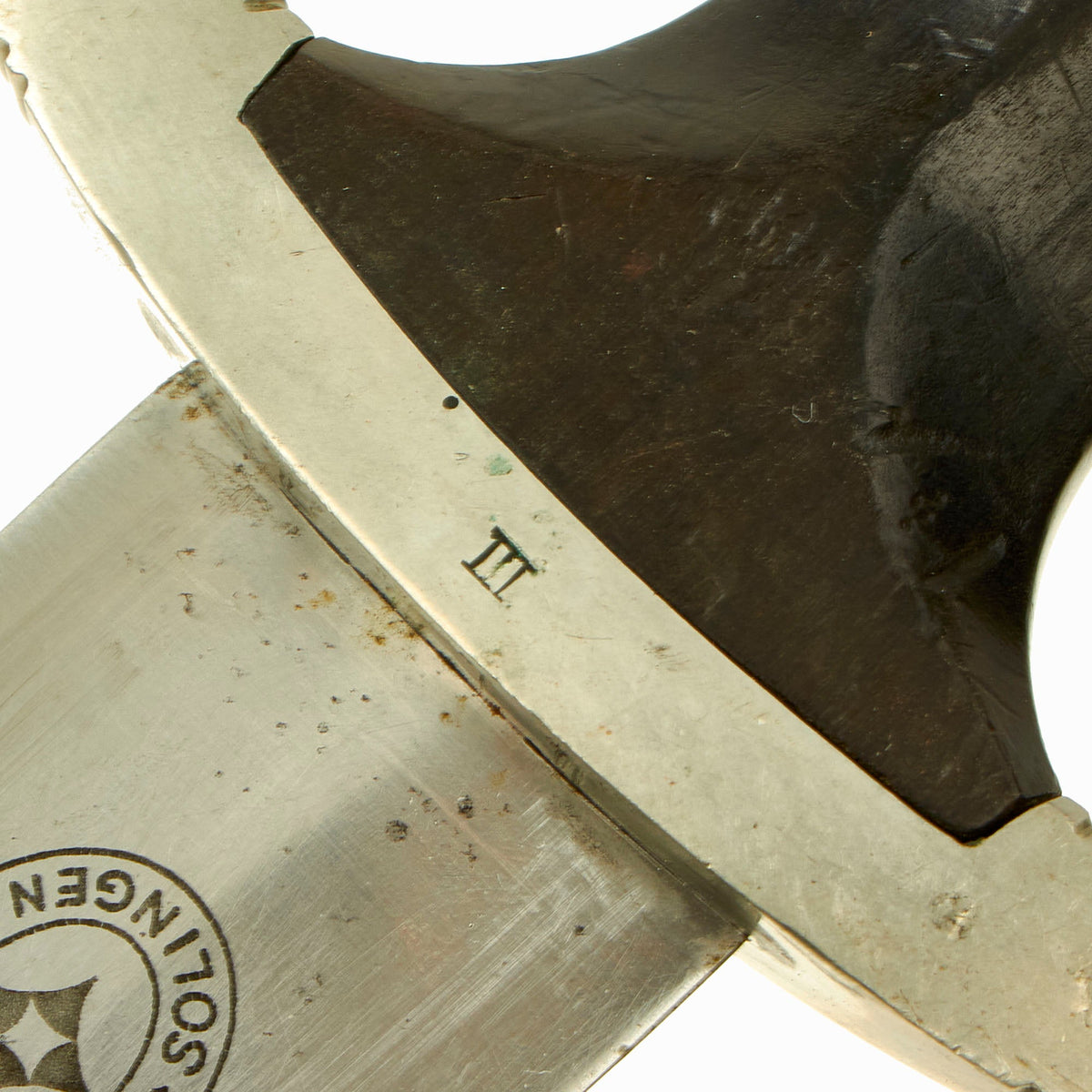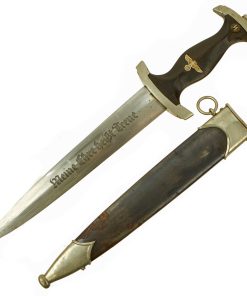Original German WWII Early Numbered M33 SS Dagger by Richard Abr. Herder with Scabbard Original Items
$ 2.695,00 $ 673,75
Original Item: Only One Available: The SS (Schutzstaffel – ‘Protection Squadron’) was originally formed in 1925, ostensibly to act as a small, loyal bodyguard unit to protect the Führer, Adolf AH. Under the direction of the infamous Reichsführer-SS Heinrich Himmler, the SS grew to be the most ruthless and feared organization of the 20th century. They were the vanguard of NSDAP and eventually controlled nearly every function of German life and much of Occupied Europe. The SS dagger was introduced in 1933. Early on, members of the SS were awarded their daggers during a ceremony at the Feldherrnhalle Memorial in Munich. The annual ritual, charged with mysticism and meant to evoke the traditions of medieval Teutonic knights, was held on 9 November, the date of the unsuccessful Munich Putsch of 1923. Both officers and enlisted men wore the identical dagger until 1936. After this time, only enlisted men wore the M1933 dagger.
The SS Dagger was equipped with nickel cross guards with an ebony wood grip. The black grip contained a National eagle with swas insignia recessed in the center area and an ᛋᛋ doppelte Siegrune (Double Sig/Victory Rune) button inset at the top. On early examples the scabbard shell surface was factory blackened using a metal bluing process. The scabbard had nickel mounts. The SS blade was a polished type containing the SS motto, Meine Ehre Heisst Treue (My Honor is Loyalty). Early examples bore one of three district stampings on the lower reverse crossguard of I, II, or III. Early examples were mostly hand-fit. Production of later examples was more standardized, using cheaper, nickel-plated fittings with black painted scabbard shells. They could be held with a standard belt hanger, or a much rarer vertical hanger.
This fine early example was produced by a well-known maker: Richard Abraham Herder, located in Solingen. This is a known producer of SS daggers during the Pre-WWII period and after. The rear of the dagger is marked with their oval trademark logo:
RICH. ABR. HERDER
(DIAMOND LOGO)
SOLINGEN
The Herder name is well known in Solingen, and this branch originally registered in 1884 as a steelware maker. As time went on they specialized in Drop Forging, and supplied blade blanks to Erfurt Arsenal and other companies. During the Third Reich period, they continued to make their own edged weapons, as well as supply blades to smaller makers. The “oval” style trademark was specifically used on the blades of early SS and SA daggers made during the Third Reich, per J. Anthony Carter’s work GERMAN KNIFE AND SWORD MAKERS.
The blade on this example shows use from service, with wear and past oxidation that has been cleaned away. It looks like there was a water exposed area on the reverse, which was also cleaned away. This has removed some of the original factory final grind crossgrain on the blade. This texture is iconic, and is the definitive identifying characteristic for a real WWII German Blade. It can be seen in the light in many areas of the blade, especially near the cross guard. The blade now shows a mostly bright finish, with some areas of staining an oxidation. The SS motto, Meine Ehre heißt Treue (Loyalty is my Honor) is crisp with little wear, still showing most of the original factory darkening. There is a small chip at the very tip of the blade. The blade shoulders perfectly meet the lower crossguard contour, and is solid in the grip.
The crossguards of this dagger and tang nut are in good condition throughout, and are of the earliest solid nickel silver construction. They have smooth surfaces, good crisp edges and precise accent grooves. They show just a bit of oxidation, which gives them a “warm” look, opposed to the cold “blue” look of chrome plating. The cross guard is marked with a Roman numeral III on the side, for the third SS district. There is also the number 112271 marked on the top of the guard, the serial number of the SS Mann who it was issued to, a great opportunity for further research! There is no lifting of the finish, showing these are indeed solid nickel silver. Per a customer request, we checked the inside of the guards, and both are marked P A on the inside, as with other examples we have handled.
The ebony grip is a nice example showing in very good shape, showing some cracking and missing chunks near the pommel guard, indicating it may have been dropped on that side at one point. The ebony wood is unfortunately brittle, and the treatment used to give it a uniform look exacerbates this. The color is very good, and wood grain can be seen. The symbol button is positioned at about 7:00 o’clock, as it should be. The silvered SS symbol and double circles around them have a nice matching patina with the nickel still intact, with a little verdigris and complete enamel. The nickel grip eagle is the “high-necked” type with the beak pointing slightly up. It remains in crisp condition, showing little wear to the bird’s head, breast and wing feathering and to the talons, wreath or swas.
The scabbard shell is a solid example, with a straight steel shell showing very little in the way of denting. The shell originally had a black “anodized” blued finish, which was then lacquered to protect it. This example has had most of the lacquer wear away, however the anodized finish is still very well retained in many areas. There is some wear, as well as an area on the front that shows some water / rust damage, which has spread a bit to the back. The matching solid nickel silver scabbard mounts are in good condition, with a lightly oxidized patina. The lower ball a bit dented in, common with the softer nickel alloy, and it looks like it was dropped, which sheared off the top of one of the two screws that hold it in place. The other three screws on the scabbard are still present.
A very nice early “Numbered” SS dagger by a rare Solingen maker, complete with scabbard! Lots of history to this fine well-worn dagger, as well as some great research potential!. Ready to display!
Specifications:
Blade Length: 8 3/4″
Overall length: 13 3/4”
Crossguard: 3”
Scabbard Length: 10”
Fast Shipping with Professional Packaging
Thanks to our longstanding association with UPS FedEx DHL, and other major international carriers, we are able to provide a range of shipping options. Our warehouse staff is expertly trained and will wrap your products according to our exact and precise specifications. Prior to shipping, your goods will be thoroughly examined and securely secured. We ship to thousands clients each day across multiple countries. This shows how we're dedicated to be the largest retailer on the internet. Warehouses and distribution centres can be located throughout Europe as well as the USA.
Note: Orders with more than one item will be assigned a processing date depending on the item.
Before shipping before shipping, we'll conduct a thorough inspection of the items you have ordered. Today, the majority of orders will be delivered within 48 hours. The delivery time will be between 3-7 days.
Returns
The stock is dynamic and we cannot completely manage it because multiple stakeholders are involved, including our factory and warehouse. So the actual stock may alter at any time. It's possible that you may not receive your order once the order has been made.
Our policy is valid for a period of 30 days. If you don't receive the product within 30 days, we are not able to issue a refund or an exchange.
You can only return an item if it is unused and in the same state as the day you received it. You must have the item in its original packaging.
Related products
Uncategorized
Uncategorized
Uncategorized
Uncategorized
Uncategorized
Uncategorized
Uncategorized
Uncategorized
Uncategorized
Uncategorized
Uncategorized
Uncategorized
Uncategorized
Angolan Rebel 1970s era 60mm Inert Display Mortar from Angolan Civil War Original Items
Uncategorized
Uncategorized
Uncategorized
Armoured Fighting Vehicles of the World: AFVs of World War One (Hardcover Book) New Made Items
Uncategorized
Uncategorized
Uncategorized
Uncategorized












































































